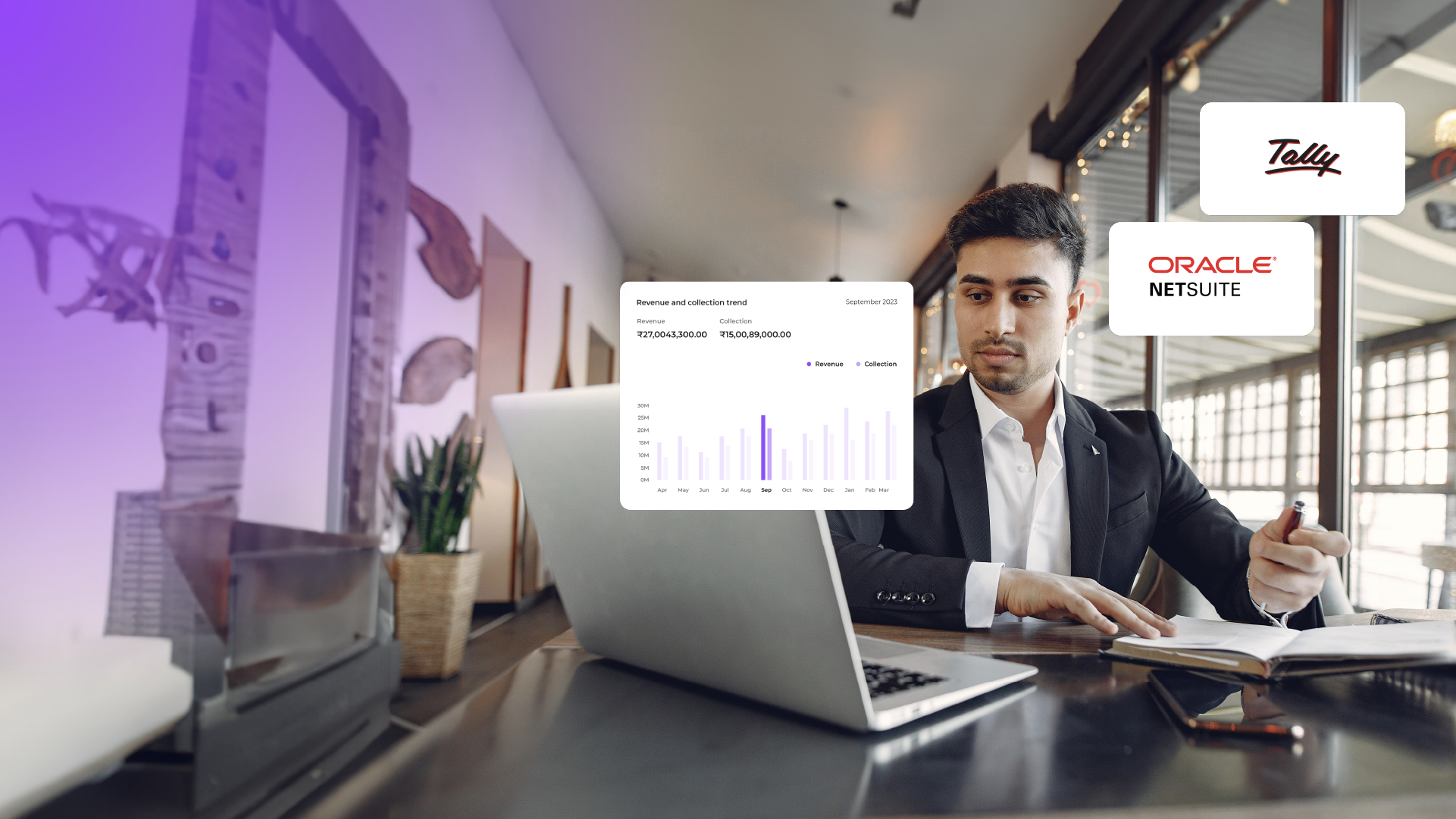Largely driven by technological advancements and changing market demands, the evolution of accounts payable is undergoing a significant transformation. As businesses aim for better financial operations, they’re turning to Accounts Payable automation for efficiency and accuracy, shaping the future of this vital function.
The evolution of accounts payable (AP) is driven by the growing complexity of business transactions. This increase in invoice volume and variety makes manual processing error-prone and time-consuming. Accounts Payable automation solutions, incorporating AI, ML, and RPA technologies, simplify invoice processing and enhance compliance.
In addition to streamlining invoice processing, Accounts Payable automation solutions now offer powerful data analytics capabilities, enabling businesses to gain deeper insights into spending patterns, supplier relationships, and cash flow dynamics. This data-driven intelligence empowers organizations to optimize procurement strategies, negotiate better terms with vendors, and effectively reduce financial risks.
The majority of AP workers, totaling 84%, believe that their department could experience significant benefits by removing manual processes and paper invoices. Automating Accounts Payable is crucial for regulatory compliance, meeting industry standards and regulations with features like audit trails, encryption, and automated checks that protect financial data from breaches or fraud. Looking ahead, advancements in AI, blockchain, and predictive analytics will further enhance the AP processes, increasing efficiency and transparency. Embracing these technologies enables organizations to seize growth opportunities in the digital age.
Challenges in traditional AP processes:
Traditional accounts payable (AP) processes pose significant challenges for CFOs and finance teams. Imagine a company receiving hundreds of paper invoices monthly and having to manually enter, verify, and approve each one. This process is time-consuming and prone to errors, leading to delayed payments and strained supplier relationships. These manual, paper-based methods are inefficient and error-prone, leading to a shift toward automation. Here are some of the main pain points in the traditional Accounts Payable process:
- Manual Data Entry and Paper-Based Invoices: Manual data entry and paper invoices are time-consuming and prone to human errors. Misplaced documents and typos can lead to payment inaccuracies and delays, complicating financial records.
- High Processing Costs: Manual handling of invoices involves substantial labor and materials costs. Printing, mailing, and storing paper documents add up, making the process expensive.
- Slow Approval Cycles: Traditional Accounts Payable processes often require multiple manual approvals, leading to delays. Slow approvals can hurt cash flow and damage supplier relationships due to late payments.
- Lack of Visibility and Control: Manual systems offer limited real-time visibility into AP workflows. This makes it difficult for CFOs to track invoice statuses, manage cash flow, and ensure compliance with policies and regulations.
- Error-Prone Reconciliation: Reconciliation of invoices and payments is troublesome and error-prone with manual processes. This can delay financial reporting and complicate month-end closing.
- Fraud and Security Risks: Paper-based Accounts Payable processes are prone to fraud and security breaches due to lack of robust tracking, allowing unauthorized access to financial documents.
- Compliance Challenges: Maintaining compliance with tax laws and regulations is difficult with manual processes. Incomplete records and errors can lead to compliance violations and fines.
- Supplier Relationship Management: Delayed and inaccurate payments strain supplier relationships. Manual processes can lead to disputes and dissatisfaction, affecting long-term supplier partnerships.
The inefficiencies of traditional Accounts Payable processes drive CFOs to adopt automation, transforming AP into a streamlined, cost-effective, and secure operation. Embracing Accounts Payable automation addresses key challenges and enhances overall financial management, providing a significant advantage for modern businesses.
Benefits that comes with AP Automation:
According to the APQC, AP automation significantly decreases the invoice error rate from 2% to 0.8%. Accounts payable (AP) automation offers significant advantages that address the critical needs of modern financial operations. Here are some of the primary benefits:
- Accelerating Processes: Automation of the Accounts Payable process accelerates the entire invoice processing cycle, from receipt to payment, by quickly capturing and validating data, thus eliminating bottlenecks from manual approvals and entry. This leads to faster approvals through instant electronic workflows, improved cash flow management with timely payments, and increased productivity by allowing staff to focus on strategic activities instead of repetitive tasks.
- Enhancing Accuracy: Automation significantly improves the accuracy of Accounts Payable processes by minimizing human errors through technologies like optical character recognition (OCR) and machine learning. This reduces typos and discrepancies, ensures consistent data validation by cross-checking invoices against purchase orders and contracts, and leads to more reliable and timely financial reporting.
- Mitigating Risks: Accounts Payable automation minimizes risks like fraud and compliance issues through advanced security features and audit trails. These include fraud prevention measures like encryption and multi-factor authentication, ensuring adherence to tax laws and regulations with accurate record-keeping, and facilitating audit readiness through comprehensive trails and real-time data access.
Automation of AP offers significant benefits by speeding up processes, improving accuracy, and reducing risks. This simplifies operations and give businesses a competitive edge in financial management.
Overcoming Implementation Challenges: Practical Tips for Seamless Integration:
Implementing accounts payable (AP) automation can revolutionize financial operations but comes with several challenges. Securing stakeholder buy-in is crucial. Clearly communicate the benefits, share success stories, and involve stakeholders early to address their concerns. Conduct a thorough needs assessment by mapping current processes, setting clear objectives, and prioritizing essential features to guide the selection of the right technology.
Choosing the right AP automation solution is the key. Ensure it is scalable, integrates easily with existing systems, and is user-friendly. Preparing for data migration involves cleansing data, developing a detailed migration plan, and thorough testing to ensure data accuracy.
Want to get started with AP automation? Check out our latest ebook!
Effective training and change management are crucial. Develop thorough training programs, offer ongoing support, and keep stakeholders informed about progress and changes. After implementation, monitor the system by tracking key performance indicators (KPIs), gathering user feedback, and staying updated with new features to ensure it meets your needs.
By addressing these challenges through careful planning and execution, you can achieve a seamless transition to AP automation, enhancing efficiency, accuracy, and financial management.
Maximizing ROI: Calculating the Financial Impact of AP Automation
Maximizing return on investment (ROI) for accounts payable (AP) automation involves a thorough understanding of its financial impact. The primary financial benefit of Accounts Payable automation is cost savings. Automation reduces the need for manual data entry, paper processing, and physical storage, leading to significant labor and material cost reductions. To calculate the total cost saved, compare the current expenses of manual processes with the reduced costs after automation.
Automation also speeds up the invoice processing cycle, resulting in faster approval times and timely payments. This efficiency translates to early payment discounts from suppliers and avoids late payment penalties. Quantify these savings by tracking the number of invoices processed faster and the discounts obtained.
AP automation significantly reduces errors, preventing costly mistakes and the need for rework. By enhancing accuracy, it decreases associated costs and saves resources. Automation also improves cash flow management by providing real-time visibility into the Accounts Payable process, enabling better financial planning. This optimized cash flow leads to reduced borrowing costs and improved investment opportunities, providing substantial financial benefits for businesses.
Additionally, automated systems enhance security and compliance, reducing the risk of fraud and fines. By automating repetitive tasks, Accounts Payable staff can focus on more strategic activities, boosting productivity. Assessing the financial impact includes estimating savings from decreased fraud incidents and compliance-related issues, along with evaluating the value of reallocating staff time to higher-value tasks and projects.
Maximizing ROI for Accounts Payable automation involves understanding and quantifying the financial benefits, from cost savings to enhanced efficiency and reduced errors. By carefully calculating these impacts, organizations can clearly see the value of their investment, making Accounts Payable automation a strategic and financially beneficial decision.
With OPEN, CFOs can revolutionize their Accounts Payable Management. OPEN offers customized payment solutions designed to help you efficiently manage finances through connected banking. By automating your AP and AR processes, OPEN’s finance automation solutions eliminate hidden costs, boost efficiency, and empower your finance team to focus on strategic initiatives that drive growth. Experience the future of financial management with OPEN. Schedule a demo today and unlock the full potential of your finance operations.
Visit Open.money for more information.





